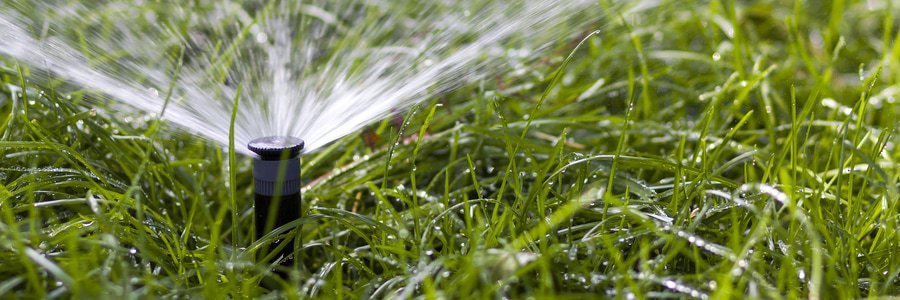Signs You’re Overwatering Or Underwatering Your Lawn

The amount of water your lawn needs can be difficult to gauge at a glance. It’s especially difficult in Texas where summers are hot and dry. Here are some common signs that your lawn might be under-watered or over-watered and what you can do to fix it.
Signs of Overwatering
Thatch
Too much moisture in your lawn could make it difficult for dead plant material to be broken down. The end result is thatch, a thick mat of partially decomposed grass roots and stems. Thatch can build up and prevent nutrients from reaching the roots of your lawn, leading to grass with shallow roots.
Thatch also attracts insects, making it the perfect habitat for them to take residence. This, in turn, can wreak havoc on your lawn and cause the health of your grass to suffer.
Weeds
Overwatering your lawn can create the perfect conditions for certain types of weeds to grow, such as crabgrass and nutsedge. This can greatly affect the health of your lawn, with crabgrass spreading throughout your lawn quickly and affecting the amount of sunlight your grass gets.
Fungus
Excess moisture in your lawn can also make it easier for the fungus to grow. This will often result in patches of mushrooms throughout your lawn, with a higher concentration on the areas that get the most water.
Signs of Underwatering
Dry soil
Dry soil is a clear sign that your grass is not getting the nutrients and moisture it needs to grow healthy. A good test to see if the soil is dry or not is to use a screwdriver. If the ground is sufficiently moist, the screwdriver should go down into the soil easily. If the soil is dry, the screwdriver should be harder to push.
Slow growth
Slow growth in the grass could be a sign that there’s not enough water. This change in growth can be temporary or permanent depending on the amount of time that has passed without water. The longer the grass goes without watering the more likely it is to lead to permanent changes in the size of the blades.
Weak springback
Footprints will be more visible when your grass is under-watered due to the grass blades having less water. This prevents the grass from springing back up once they’re stepped on or disturbed.
What Is The Right Amount Of Water?
An inch of water per week is often enough for most grass types, but it’s best to determine the ideal amount for your grass type by asking a professional. It can be hard to determine the amount of water at a glance so using a rain gauge is a great way to solve this.
Using a sprinkler system can help make the job easier. Unfortunately, it’s easy to leave your sprinkler system on for too long if you’re not careful. To fix this, there are a variety of smart sprinklers available on the market that can measure the right amount of water to use. They are a handy tool that will not only reduce the amount of water used for your lawn but also allow you to manage your system remotely.
A Well-Watered Lawn Is A Healthy Lawn
By following a proper watering schedule and keeping an eye on the amount of water that your lawn gets, you can ensure that it survives the hot summer months in Texas.
Need sod for your home or project? The Grass Outlet has you covered! Visit our online store and see all the varieties of grass we have available.





